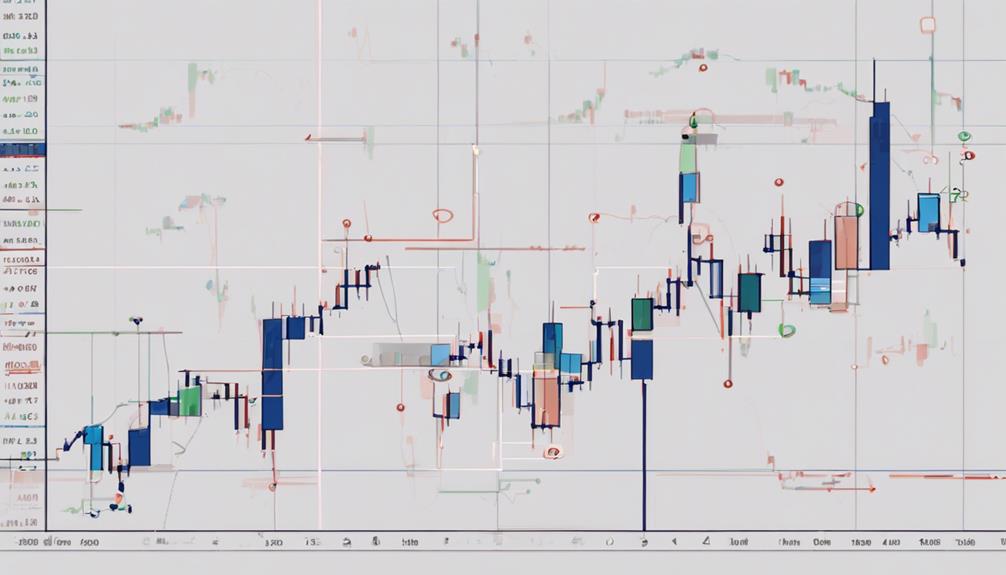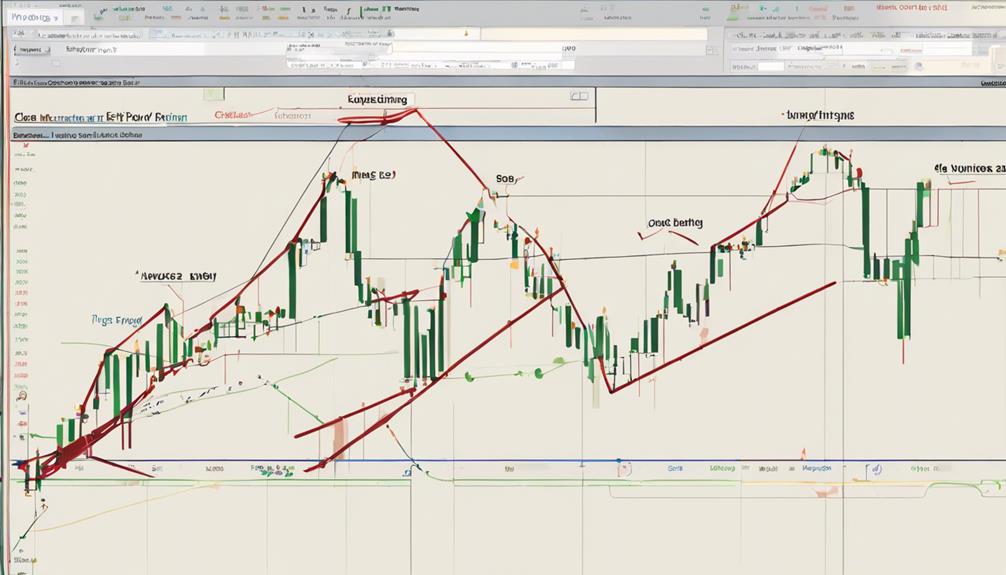In the realm of pivot point trading, mastering the seven essential steps can be a game-changer for traders seeking success in the dynamic world of financial markets.
From establishing a solid trading plan to strategically identifying key pivot point levels, each step plays a crucial role in navigating the complexities of trading with precision and confidence.
Understanding these fundamental principles is not just about making trades; it's about mastering a strategic approach that can potentially lead to more informed decisions and improved outcomes in the fast-paced world of trading.
Establishing a Solid Trading Game Plan
Establishing a solid trading game plan is the cornerstone of successful trading, requiring meticulous attention to setting clear goals, risk parameters, and strategic entry/exit techniques. Within this plan, traders must consider various factors such as pivot points, support and resistance levels, and effective risk management strategies. Pivot points, derived from previous day's high, low, and closing prices, are critical levels that indicate potential price movements. Identifying key support and resistance levels further aids in determining optimal entry and exit points.
A well-defined trading strategy based on these pivot points and levels helps traders navigate the market with more precision. It is essential to establish a clear plan for trade execution, factoring in price action and market trends. Effective risk management techniques, including setting stop-loss orders and defining position sizes based on risk tolerance, are integral components of a solid trading game plan. Consistency in following the plan, adapting to changing market conditions, and continuous improvement are vital for achieving trading success.
Identifying Key Pivot Point Levels

Identifying key pivot point levels is a fundamental aspect of precision trading, providing crucial insights into potential price movements based on the previous session's high, low, and close prices.
Key pivot point levels include the central pivot point (PP), support levels (S1, S2, S3), and resistance levels (R1, R2, R3). Support levels (S1, S2, S3) represent potential buying opportunities, while resistance levels (R1, R2, R3) indicate selling opportunities.
Traders utilize these levels to identify potential support or resistance pivots, crucial for determining entry and exit points. Pivot point strategies are instrumental in recognizing potential reversals and managing risk effectively through the placement of stop-loss orders.
Analyzing Market Trends and Patterns

Studying historical price movements to recognize patterns and potential future directions is a foundational aspect of analyzing market trends and patterns in trading. Traders rely on various technical analysis indicators such as moving averages, Relative Strength Index (RSI), and chart patterns like double tops to gauge market trends.
Understanding these patterns aids in predicting trend reversals and determining optimal entry and exit points for pivot point trading strategies. Additionally, tools like Fibonacci Pivot Points can enhance the accuracy of pivot point calculations by incorporating key Fibonacci levels into the analysis.
By identifying chart patterns such as head and shoulders, triangles, and flags, traders can gain insights into the market's potential direction. This knowledge equips traders to make informed decisions based on the overall trend, ensuring they capitalize on market movements effectively.
In essence, analyzing market trends and patterns is essential for devising successful pivot point trading strategies.
Implementing Strategic Entry and Exit Points

Analyzing market trends and patterns is foundational for successful pivot point trading, and a key aspect of this strategy is implementing strategic entry and exit points based on pivot level analysis. To effectively execute this strategy, traders should consider the following:
- Strategic Entry Points: Optimal entry points are often in proximity to the central pivot point. This proximity not only provides a clearer picture of potential price movements but also offers favorable risk-to-reward ratios.
- Setting Exit Points: Exit points are commonly placed at support or resistance levels derived from pivot points. This approach helps secure profits by capitalizing on price movements predicted by pivot analysis.
- Risk Management with Stop-Loss Orders: Implementing stop-loss orders at key pivot levels is crucial for managing risk during trades. These orders help limit potential losses and protect capital.
- Precise Execution: Successful pivot point trading hinges on the precise execution of entry and exit points based on pivot level analysis. Traders must adhere to their predetermined plan for entry and exit strategies to maximize profitability.
Monitoring and Adjusting Trading Positions

Regularly monitoring price movements is essential for assessing the effectiveness of trading positions and making necessary adjustments in response to changing market conditions. When trading with a pivot point strategy, it is crucial to identify key price levels that act as support and resistance. By closely observing price action around these levels, traders can determine optimal entry and exit points.
Adjusting stop-loss orders to secure profits and protect against potential losses is a fundamental aspect of managing trading positions effectively. Utilizing technical analysis indicators can aid in identifying potential pivot point bounce opportunities or trend reversals. Staying informed about news events and economic indicators that could impact the market is also vital for adapting trading positions accordingly.
Implementing trailing stop-loss orders can help lock in profits while allowing for further gains if the market moves favorably. Overall, staying vigilant and proactive in monitoring and adjusting trading positions is essential for success in pivot point trading strategies.
Are the Essential Steps for Successful Pivot Point Trading the Same as the Top Tips for Trading with Pivot Points?
Yes, the essential steps for successful pivot point trading are indeed the same as the top trading with pivot points tips. Understanding support and resistance levels, using multiple time frames, and waiting for confirmation are crucial for both successful pivot point trading and trading with pivot points.
Frequently Asked Questions
What Is the Best Pivot Point Trading Strategy?
The best pivot point trading strategy involves identifying key support and resistance levels derived from pivot points to capitalize on price reversals and breakout opportunities. Utilize stop-loss orders and combine pivot analysis with technical indicators for enhanced decision-making.
What Is the Fibonacci Pivot Point Trading Strategy?
Utilizing Fibonacci ratios in pivot point calculations, the Fibonacci pivot point trading strategy enhances precision by determining support and resistance levels. Popular among technical analysts, this method combines Fibonacci retracement levels with traditional pivot points for effective price reversal identification.
Do Professional Traders Use Pivot Points?
Professional traders frequently utilize pivot points as crucial levels for determining support and resistance in financial markets. By incorporating pivot points into their strategies, these traders enhance decision-making, manage risk effectively, and identify trading opportunities.
What Is the 5 3 1 Trading Strategy?
The 5 3 1 trading strategy is a structured approach that aims for a 5-point profit, with a 3-point stop-loss and a 1-point trailing stop. It helps traders maintain a favorable risk-reward ratio, enhancing profitability and reducing losses.
Conclusion
In conclusion, mastering the seven essential steps to successful pivot point trading requires dedication, strategic planning, and a deep understanding of technical analysis.
By following a structured approach to identifying key levels, analyzing market trends, and implementing effective entry and exit points, traders can increase their chances of success in the dynamic world of trading.
Remember, consistency and practice are key to achieving profitable results in pivot point trading. Embrace these steps and watch your trading skills soar.
